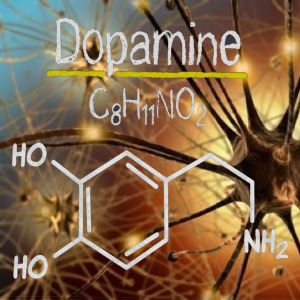
You will actually experience increases in dopamine when you see a stimuli that predicts that you will get a reward. If we legalize drugs, we are not only going to be making that drug more available, but we are going to be surrounding ourselves with all of these stimuli and we are going to get conditioned [to seek that drug induced dopamine reward]. It’s an automatic process.
As reported in the New York Times “This is your brain on drugs” this month: High-THC marijuana is associated with paranoia and psychosis, according to a June article in The New England Journal of Medicine. “We have seen very, very significant increases in emergency room admissions associated with marijuana use that can’t be accounted for solely on basis of changes in prevalence rates,” said Nora D. Volkow, director of the National Institute on Drug Abuse and a co-author of the THC study. “It can only be explained by the fact that current marijuana has higher potency associated with much greater risk for adverse effects.” Emergency room visits related to marijuana have nearly doubled, from 66,000 in 2004 to 129,000 in 2011, according to the Substance Abuse and Mental Health Services Administration.
Higher potency may also accelerate addiction. “You don’t have to work so hard to get high,” said Alan J. Budney, a researcher and professor at Dartmouth’s medical school. “As you make it easier to get high, it makes a person more vulnerable to addiction.” Among adults, the rate is one of 11; for teenagers, one of six.
For the Harvard-Northwestern study, published in the April issue of The Journal of Neuroscience, the team scanned the brains of 40 young adults, most from Boston-area colleges. Half were nonusers; half reported smoking for one to six years and showed no signs of dependence. Besides the seven light smokers, nine used three to five days a week and four used, on average, daily. All smokers showed abnormalities in the shape, density and volume of the nucleus accumbens, which “is at the core of motivation, the core of pleasure and pain, and every decision that you make,” explained Dr. Hans Breiter, a co-author of the study and professor of psychiatry and behavioral sciences at Northwestern’s medical school.
Similar changes affected the amygdala, which is fundamental in processing emotions, memories and fear responses.
What is already known is that in casual users, THC can disrupt focus, working memory, decision making and motivation for about 24 hours. “The fact that we can see these structural effects in the brain could indicate that the effects of THC are longer lasting than we previously thought,” said Dr. Gilman, an instructor in psychology at Harvard’s medical school.
And in Boston on September 22, 2014, Dr. Nora Volkow of NIDA explained:
- Addiction is a developmental disease.
- Also, there is a powerful social fashion element to drug abuse. If people believe a lot of other people are taking drugs then they are much more likely to consume them themselves. A cultural change toward marijuana influences adolescents.
See the following video time stops for an explanation of the biology of addiction:
- 25:06 “Our brains are hard wired to respond to rewards. When you get a drug that activates the the reward center, your brain is going to respond to it.”
- 26:02 “but there is something very interesting about drugs, [re: dopamine and addiction] that’s actually very relevant as we discuss legalization”
- Consider all the brightly colored attractive marijuana ads we see in Colorado newspapers.
- You will actually experience increases in dopamine when you see a stimuli that predicts that you will get a reward [like a pleasurable sensation] We call this “conditioned stimuli.”
- This is a biological adaptation. [but drugs produce a more powerful impact in the brain]
- Increases in dopamine enhance your motivation to do that behavior. So [the biological response to viewing the stimuli in the drug ads] is [biologically speaking]: — in order to increase the chances that you will get that reward, [the open advertising] increases the chances that you will do that behavior [consume that drug] in order to get the reward.
- If we legalize drugs, we are not only going to be making that drug more available, but we are going to be surrounding ourselves with all of these stimuli and we are going to get conditioned [to seek that drug induced dopamine reward]. It’s an automatic process.
- This is another reason why legalization of drugs has a very negative impact — because it brings forward stimuli that will make you to automatically, just by visually looking at them [images associated with drug rewards] activate those dopamine systems that make you want to have [the drugs].
- This is likely to drive, as we know from drug addiction research, a lot of the drug taking behavior.
- 32:55 The predictor of how many people are going to become addicted to the drug depends not only on the chemistry of the drug, but it’s legal status. Legal status will determine that the drug will become much more widely available, so the likelihood that you will repeatedly administer is much higher, which increases the transitions into addiction.
- [With advertising] conditioning will drive the desire to take the drug. This is how our brains are wired.